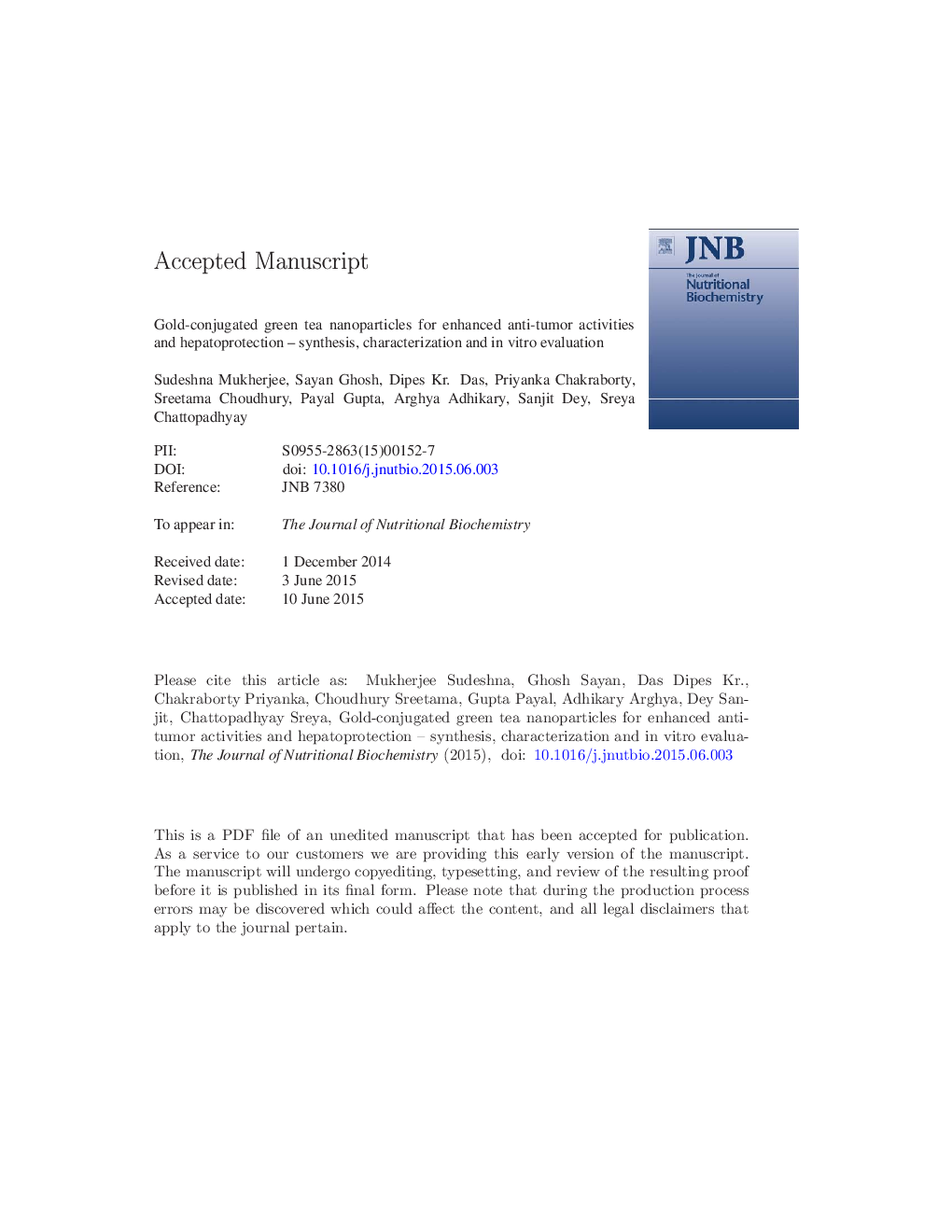| Article ID | Journal | Published Year | Pages | File Type |
|---|---|---|---|---|
| 8336814 | The Journal of Nutritional Biochemistry | 2015 | 55 Pages |
Abstract
Green tea (GT)-based chemoprevention has shown promising results in various cancer models. However, the effective dose may not be far from the toxic dose because of inefficient systemic delivery and limited bio-availability of GT polyphenols. We have used GT polyphenols to successfully reduce gold to corresponding gold nanoparticles (NPs) in a single step; a process that fulfils all criteria of green nanotechnology as no “man-made” chemical other than gold acids are used. GT and (â) - epigallocatechin-3-gallate (EGCG) conjugated gold NPs (diameters <50 nm), showed remarkable stability, significantly rapid cellular uptake and excellent in vitro anti-oxidant activities. These NPs were observed to be selectively toxic towards cancer cells (Ehrlich's Ascites Carcinoma and MCF-7) while showing absolutely no lethality towards normal primary mouse hepatocytes. In cancer cells, NPs altered the redox status and limited Nrf2 activation by almost 50%. These NPs significantly decreased nuclear translocation of NF-κB, coupled with decreased phosphorylation of IĸB and down-regulation of NF-κB-dependent anti-apoptotic proteins Bcl2 and Akt in a dose-dependent manner, triggering onset of apoptosis. Culturing normal hepatocytes with tumor-conditioned media prompted apoptosis by increasing reactive oxygen species (ROS) and depleting the anti-oxidant defense mechanism of hepatocytes. Pre-treatment with NPs protected hepatocytes from tumor-induced cellular damage by scavenging excess ROS, increasing the levels of reduced glutathione and anti-oxidant enzymes. There was evidence of decreased Bax/Bcl2 ratio and active Caspase 3 levels in these hepatocytes, indicating apoptosis escape. Nanoformulations of GT-based polyphenols might serve as an operative platform for effective delivery, increased bio-availability, enhanced effects and minimal chemotherapy-associated toxicities.
Related Topics
Life Sciences
Biochemistry, Genetics and Molecular Biology
Biochemistry
Authors
Sudeshna Mukherjee, Sayan Ghosh, Dipesh Kr. Das, Priyanka Chakraborty, Sreetama Choudhury, Payal Gupta, Arghya Adhikary, Sanjit Dey, Sreya Chattopadhyay,
